Analysis Audio Epsilon Loudspeaker by Terry London
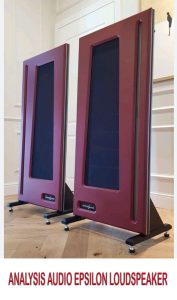
 I had a seventeen-year run using big planar speakers in my reference system. These electrostatic or planar-magnetic dipoles (equal sound radiated from the front and back) were “tricked out” with custom stands and external active crossovers. They were placed in an ample acoustic space that could accommodate these seven-foot panels’ desired placement far off the front wall and also allowed me to set at least twelve feet off in my listening position. At a very high level, I could attain the great sonic virtues that world-class planar speakers offer, an unbelievably open natural soundstage, great transparency that allowed all the minute details of the music to be easily heard, and a total absence of box enclosure-induced colorations or distortions. Regarding bass reproduction, I had no difficulty having a seamlessly integrated extended bottom end using a pair of strategically placed subwoofers in my listening room.
I had a seventeen-year run using big planar speakers in my reference system. These electrostatic or planar-magnetic dipoles (equal sound radiated from the front and back) were “tricked out” with custom stands and external active crossovers. They were placed in an ample acoustic space that could accommodate these seven-foot panels’ desired placement far off the front wall and also allowed me to set at least twelve feet off in my listening position. At a very high level, I could attain the great sonic virtues that world-class planar speakers offer, an unbelievably open natural soundstage, great transparency that allowed all the minute details of the music to be easily heard, and a total absence of box enclosure-induced colorations or distortions. Regarding bass reproduction, I had no difficulty having a seamlessly integrated extended bottom end using a pair of strategically placed subwoofers in my listening room.
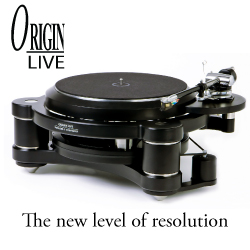 However, I experienced three shortcomings that I could never eliminate: The speakers had to be played at high volume levels; otherwise, overall dynamics and clarity would suffer.
However, I experienced three shortcomings that I could never eliminate: The speakers had to be played at high volume levels; otherwise, overall dynamics and clarity would suffer.
There was always a slight enlargement or “bloating” of individual players or singers instead of realistic three-dimensional-sized images. Some of the best cone-based driver designs today, which have eliminated the enclosure colorations tremendously, offer a more pinpoint placement of instruments on a layered soundstage with more dense and solid holographic imaging.
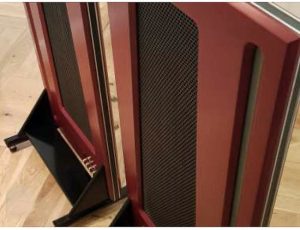
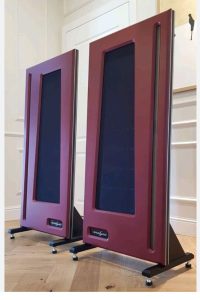
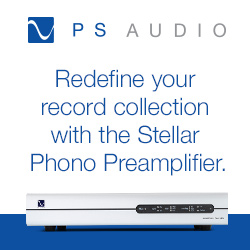 The subject of this review, the Analysis Audio Epsilon planar speaker, was requested by many readers wanting to review one of their models. Analysis Audio, located in Athens, Greece, has evolved its planar technology approach for over thirty years. I was curious if their planar design had eliminated the shortcomings mentioned above. I contacted Mike Kalellis, the North American importer/distributor in Charlotte, North Carolina, to set up this review. We decided on the second largest model, the Epsilon. *The four models of the Analysis Audio stable of speakers only differ in their heights.
The subject of this review, the Analysis Audio Epsilon planar speaker, was requested by many readers wanting to review one of their models. Analysis Audio, located in Athens, Greece, has evolved its planar technology approach for over thirty years. I was curious if their planar design had eliminated the shortcomings mentioned above. I contacted Mike Kalellis, the North American importer/distributor in Charlotte, North Carolina, to set up this review. We decided on the second largest model, the Epsilon. *The four models of the Analysis Audio stable of speakers only differ in their heights.

This model variation equates to lower bass extension as you go up in the line. An upgrade that can be added on is a dedicated external crossover. The pair of Epsilon speakers Kalellis shipped to me for review was clad in exquisite black piano lacquer; the pair in this upgraded finish retailed for USD 21,600. In a standard finish, the retail for a pair is USD 18,000.
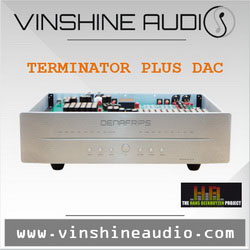 The Analysis Audio Epsilon speaker’s dimensions are 4ft 4 inches H x 2ft W x 2.4 inches D, and each speaker weighs 79 pounds. Its frequency range is 26 Hz to 20 kHz with a sensitivity of 86 dB and a nominal 4 Ohm rating. My Coda #16, SPL S1200, and Threshold 550e amplifiers effortlessly drove the Epsilon speakers with tonal beauty and unlimited macro-dynamics. The slight trapezoid Mylar bass panel measures 9 inches on the top and 12 inches on the bottom. This panel delivers 282 square inches of radiating bass frequencies. Unlike other planar speakers that clap the Mylar membrane to the frame, Analysis Audio developed a rubber suspension that attaches the Mylar to the frame, leading to more movement to the panel and producing more profound and more accurate bass extension. The Mylar ribbon midrange/tweeter is 44 inches in length.
The Analysis Audio Epsilon speaker’s dimensions are 4ft 4 inches H x 2ft W x 2.4 inches D, and each speaker weighs 79 pounds. Its frequency range is 26 Hz to 20 kHz with a sensitivity of 86 dB and a nominal 4 Ohm rating. My Coda #16, SPL S1200, and Threshold 550e amplifiers effortlessly drove the Epsilon speakers with tonal beauty and unlimited macro-dynamics. The slight trapezoid Mylar bass panel measures 9 inches on the top and 12 inches on the bottom. This panel delivers 282 square inches of radiating bass frequencies. Unlike other planar speakers that clap the Mylar membrane to the frame, Analysis Audio developed a rubber suspension that attaches the Mylar to the frame, leading to more movement to the panel and producing more profound and more accurate bass extension. The Mylar ribbon midrange/tweeter is 44 inches in length.
My first experimentation with the Epsilon speakers was placing the ribbon tweeter/midrange on the inside or outside. I found out that by placing the ribbon driver on the inside, the spatiality of individual instruments floated more in the soundstage vs. being placed on the front of the speaker. Next was the distance from the front wall, which is critical because of the nature of dipoles radiating equal sound pressures front and back. To lock in the imaging and develop a precise soundstage, the bounce of the sound waves off the front wall must time up with the sound waves being radiated by the front of the panel and ribbon midrange/tweeter. In my system, it locked in with the Epsilon speakers being 48 inches from the front wall with a slight toe-in that aimed the panels slightly past my ears.
 I started the reviewing process with the Singapore-based jazz singer Jacintha’s “Here’s To Ben / A vocal tribute to Ben Webster,” which was recorded at a reference level regarding spatiality and tonality. It also has one of my favorite tenor saxophonists, the late Teddy Edwards. The overall soundstage was open and spread from wall to wall, far wider than the outer edge of the Epsilon speakers. Most importantly, based on my criticism that planar speakers enlarge or slightly “bloat” individual images, Jacintha was dead center, surrounded by her band members. The Epsilon speakers created a holographic realistic-sized image of her.
I started the reviewing process with the Singapore-based jazz singer Jacintha’s “Here’s To Ben / A vocal tribute to Ben Webster,” which was recorded at a reference level regarding spatiality and tonality. It also has one of my favorite tenor saxophonists, the late Teddy Edwards. The overall soundstage was open and spread from wall to wall, far wider than the outer edge of the Epsilon speakers. Most importantly, based on my criticism that planar speakers enlarge or slightly “bloat” individual images, Jacintha was dead center, surrounded by her band members. The Epsilon speakers created a holographic realistic-sized image of her.
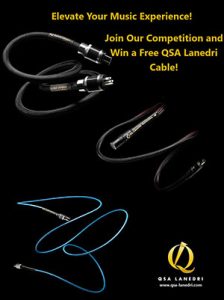 My following selection was the album by alto saxophonist Jesse Davis entitled “Live at Small’s Club.” Davis was very active on the jazz scene about 15 years ago. In my collection, I have six of his albums from that period, all of which are first-rate. I considered him one of the most talented of the young alto saxophonists, and then he disappeared from the scene both in live performances and ceased recording in the studio. I am glad he’s alive and well and still sizzling on his instrument. If my facts are correct, he became disgruntled with the music business and American culture, moved permanently to Italy, and is happily married to an Italian woman. The Epsilon captured the timbres and tonality of his alto saxophone timbres/tonality with a beautiful and pristine delivery. What also was very apparent was the rendition of the drummer’s cymbal work, which had the airiness and delicacy experienced in live performances. This album has deep extended bass, which the Epsilon speakers effortlessly reproduced with accurate pressurizing bass notes that you would typically associate with box enclosure speakers with significant cone bass drivers. I also tested if the speaker could be played at low volume levels without losing overall dynamics or collapsing the soundstage. Unlike the planar speakers that I owned in the past, the Epsilon speakers could be played at low levels and still be in the “sweet spot.”
My following selection was the album by alto saxophonist Jesse Davis entitled “Live at Small’s Club.” Davis was very active on the jazz scene about 15 years ago. In my collection, I have six of his albums from that period, all of which are first-rate. I considered him one of the most talented of the young alto saxophonists, and then he disappeared from the scene both in live performances and ceased recording in the studio. I am glad he’s alive and well and still sizzling on his instrument. If my facts are correct, he became disgruntled with the music business and American culture, moved permanently to Italy, and is happily married to an Italian woman. The Epsilon captured the timbres and tonality of his alto saxophone timbres/tonality with a beautiful and pristine delivery. What also was very apparent was the rendition of the drummer’s cymbal work, which had the airiness and delicacy experienced in live performances. This album has deep extended bass, which the Epsilon speakers effortlessly reproduced with accurate pressurizing bass notes that you would typically associate with box enclosure speakers with significant cone bass drivers. I also tested if the speaker could be played at low volume levels without losing overall dynamics or collapsing the soundstage. Unlike the planar speakers that I owned in the past, the Epsilon speakers could be played at low levels and still be in the “sweet spot.”
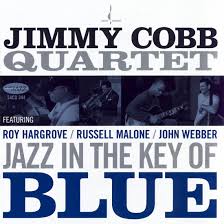 Lastly, I cued up the album by Jimmy Cobb’s quartet, which features trumpet player Roy Hargrove, “Jazz in the Key of Blue,” which was recorded by Chesky Records at one of the highest levels of fidelity and presented the music with some of the most accurate timbres and colors in a beautiful natural manner. The Epsilon speakers captured all the timbres and colors of the different instruments with high resolution, delicacy, and purity.
Lastly, I cued up the album by Jimmy Cobb’s quartet, which features trumpet player Roy Hargrove, “Jazz in the Key of Blue,” which was recorded by Chesky Records at one of the highest levels of fidelity and presented the music with some of the most accurate timbres and colors in a beautiful natural manner. The Epsilon speakers captured all the timbres and colors of the different instruments with high resolution, delicacy, and purity.
In summary, I found the Analysis Audio Epsilon speaker to be a terrific performing speaker regarding soundstaging, an overall transparency revealing all the nuances (micro-details) in the music, an excellent airy, delicate high end, a midrange that rivals the best I have heard, a top to bottom seamlessness of all the frequencies, and the best low end I have heard in a planar design. The concerns that I stated early in the review with planar speakers have been either eliminated or lowered to such a degree that they did not interfere with the performance of the Epsilon. These shortcomings were that planar speakers usually have to be played at relatively higher volume levels to maintain their dynamics and spatiality, they slightly exaggerate the size of individual images, and they could not do pinpoint imaging compared to the best box enclosure designs.
Another take on the Analysis Audio Epsilon speaker is that if you are in love with the midrange beauty of the legendary Quad ESL speaker but dislike the rolled-off high end, lack of bass, and overall dynamics and you cannot play them at high volume pressure levels, the Epsilon has the midrange beauty plus an airy extended high end, deep bass extension, and will play at very high SPL levels effortlessly. This speaker is definitely your cup of Sonic tea.
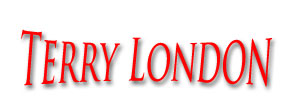
![]()
Specifications:
Price $21,600 reviewed in upgrade finish
$18,000 in stock finish
Model: EPSILON
Ohms: 4
Sensitivity: 86 dB
Dimension:4ft 4in, 2ft, 2.4in (132cm, 61cm, 6cm)
Weight: 79 lb (36kg)
Website: http://www.analysisaudiousa.net/
Terry’s Associated Equipment
Sources:
Pass Labs DAC-1
Audio Note (UK) DAC 4.1x Balanced Signature
Reimyo DAP-999EX Limited “Toku”
Pro-Ject reference CD transport & Linear Tube Audio Power Supply
CEC-3 belt-driven CD transport
Mark Levinson 31.5 reference transport
Amplification:
Coda FET 07x preamplifier
Coda # 16.0 amplifier
SPl Elector preamplifier
SPL S1200 amplifier
AricAudio Super SET 300B amplifier
AricAudio Motherlode MKII preamplifier
Loudspeakers:
Tekton Design Ulfberth & Perfect SET
NSMT Model 100
NSMT band pass subwoofer x two
Musician Audio- Knight One speaker
Accessories:
Black Cat Cables- digit 110AES/EBU-3202 XLR IC’s
Krimuss Audio Adrenaline speaker wire
Krolo Design reference rack & footers
Puritan Audio power conditioner & circuit grounding system
Audio Archon power cords
Stereo Times Masthead
Publisher/Founder
Clement Perry
Editor
Dave Thomas
Senior Editors
Frank Alles, Mike Girardi, Russell Lichter, Terry London, Moreno Mitchell, Paul Szabady, Bill Wells, Mike Wright, and Stephen Yan,
Current Contributors
David Abramson, Tim Barrall, Dave Allison, Ron Cook, Lewis Dardick, John Hoffman, Dan Secula, Don Shaulis, Greg Simmons, Eric Teh, Greg Voth, Richard Willie, Ed Van Winkle, and Rob Dockery
Site Management Clement Perry
Ad Designer: Martin Perry






Be the first to comment on: Analysis Audio Epsilon Loudspeaker by Terry London